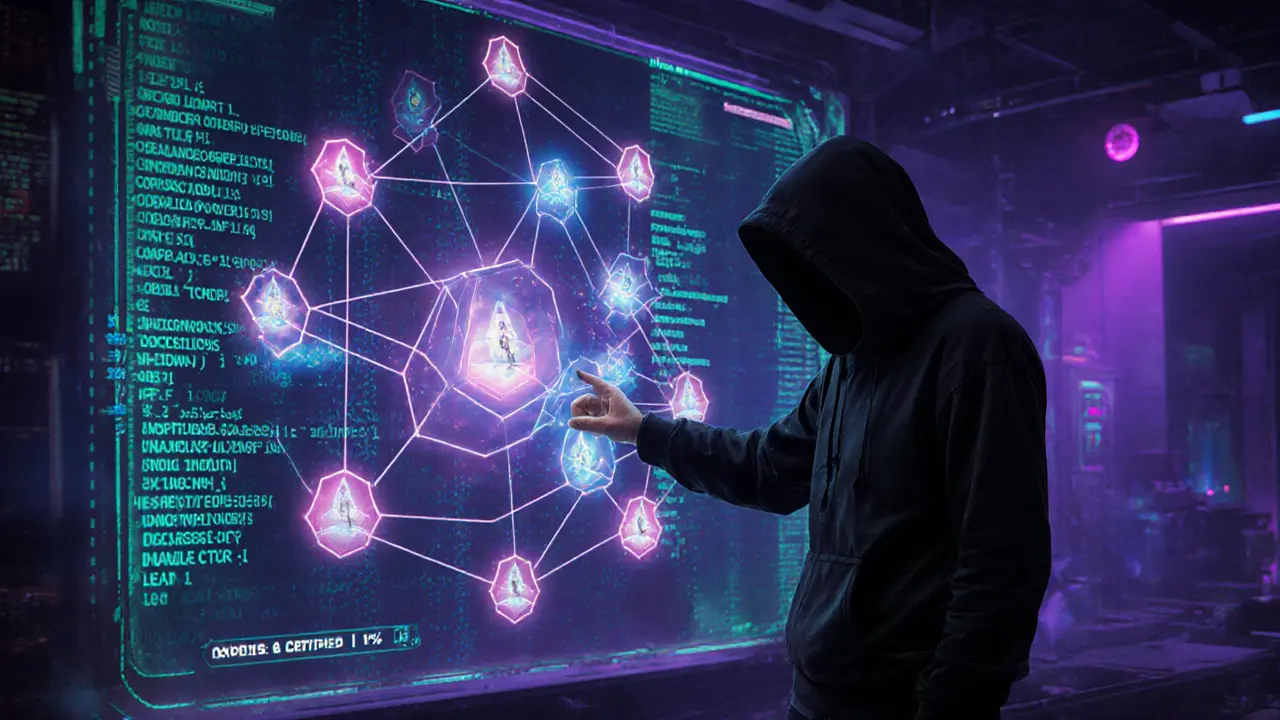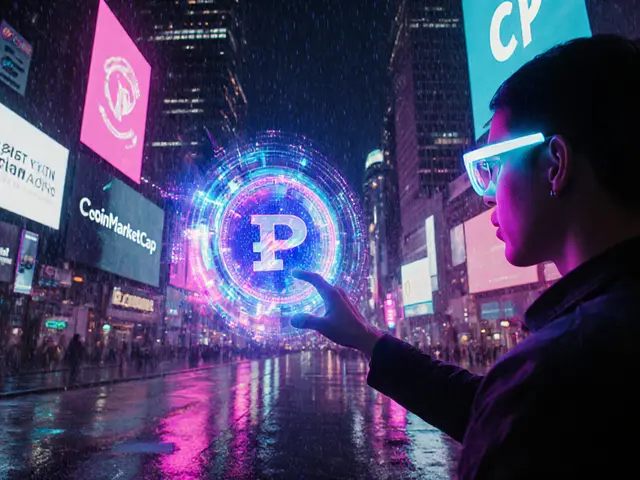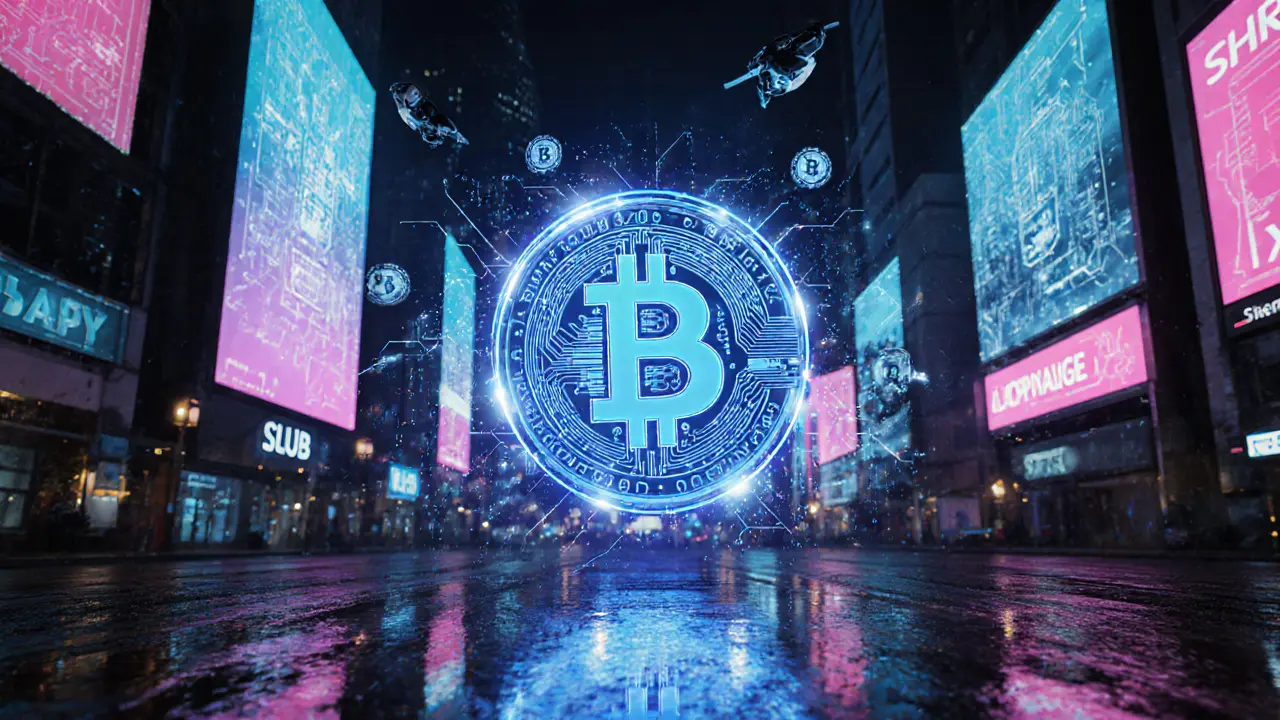ULT Token Value Calculator
ULT Token Information
Calculator Inputs
Revenue Distribution Analysis
Key Insights
- 1% Minimum allocation requirement for ULT holders
- Dynamic Revenue increases with network adoption
- Volatility Token value depends on ecosystem success
Ever wondered what Shardus actually does and why its ticker ULT keeps popping up in crypto feeds? In simple terms, Shardus is a licensing token that unlocks a new kind of distributed ledger software built for massive scale. It isn’t a traditional “coin for payments” - it’s an ERC‑20 token that grants developers the right to run Shardus‑powered blockchains and share in the revenue those networks generate.
TL;DR
- Shardus (ULT) is an ERC‑20 token used to license Shardus distributed‑ledger software.
- The technology relies on compute and state sharding, plus a Proof‑of‑Quorum consensus, to achieve high throughput and instant finality.
- Public networks built on Shardus must allocate at least 1% of their token supply to ULT holders.
- ULT trades mainly on Uniswap V3 (Polygon) and has very low daily volume, making liquidity a concern.
- Analysts view the token as bearish; price forecasts hover below $0.08 through 2035.
What Is Shardus?
When you first see the name, you might think Shardus is another meme coin. It isn’t. Shardus is a distributed ledger platform that focuses on solving the scalability‑decentralization trade‑off. The project debuted as the “Unblocked Ledger Token” (ULT) and rebranded to emphasize its sharding approach. Unlike typical blockchains that try to do everything on a single chain, Shardus splits both computation and state across many nodes, allowing the network to grow without slowing down.
How Does the Shardus Technology Work?
The core of the system is the Shardus Consensus Algorithm. It blends two ideas:
- Proof‑of‑Quorum (PoQ): Nodes form a quorum that collectively signs off on each block. Because the quorum is a subset of the whole network, finality is near‑instant.
- Compute and State Sharding: Every shard handles a slice of the overall workload and stores only a fragment of the global state. As more users join, new shards spin up automatically, keeping transaction speed high.
This combination means the network can theoretically support billions of daily active users - a claim still being tested in real‑world deployments.
Token Economics: Licensing, Supply, and Revenue Sharing
ULT is an ERC‑20 token built on Ethereum. Its maximum supply is capped at 1billion tokens. However, the circulating amount isn’t consistently reported, which adds a layer of opacity for investors.
The token’s primary utility is licensing. When a new blockchain decides to use Shardus software, it must set aside at least 1% of its native token supply for ULT holders. That allocation creates a passive income stream: the more networks adopt Shardus, the larger the royalty pool that flows back to ULT owners.
Because the token is tied to licensing revenue rather than direct transaction fees, its value depends heavily on the success of projects built on Shardus. So far, the two most visible implementations are Shardeum and Liberdus. Both aim to demonstrate the sharding model at scale, but neither has yet reached mainstream adoption.
Market Performance and Trading Landscape
As of October2025, ULT’s price data is all over the place. CoinGecko lists it around $0.0746 with a 24‑hour volume of roughly $24, while CoinMarketCap shows a price near $0.0696 and volume just under $50. The discrepancy stems from the token being listed on only a handful of exchanges.
The main trading venue is Uniswap V3 (Polygon), where the ULT/WETH pair generates the bulk of activity - a modest $2.5 in 24‑hour volume. A secondary market exists on ProBit (ULT/USDT), but even there daily volume barely reaches $53. Recent statistics indicate a 98% drop in daily volume from the previous day, signalling major liquidity concerns. Low liquidity can lead to high slippage, making large trades expensive or even impossible.

Price History, Volatility, and Analyst Forecasts
ULT’s price has been volatile. Over the past 14days it jumped 31%, but in the last 24hours it fell nearly 20% on some platforms. Year‑to‑date performance sits roughly 44% below its 2024 peak, yet still around 222% above its lowest ever level.
Professional analysis leans bearish. The platform 3Commas currently issues a “Sell” rating, with short‑term price targets hovering between $0.0732 and $0.0735. Long‑term models project an average price of $0.0504 by 2035, with a ceiling near $0.0781. Even the most optimistic end‑2025 forecast sits at $0.0758. All predictions carry the usual disclaimer that they are not financial advice.
Ecosystem Adoption: Shardeum, Liberdus, and Beyond
Two public networks actively showcase Shardus technology:
- Shardeum - a layer‑1 blockchain that advertises “infinite scalability” through dynamic sharding. It uses ULT as the licensing token and promises to allocate the mandatory 1% share to token holders.
- Liberdus - another experimental chain focused on privacy‑preserving transactions while still leveraging the same consensus and sharding mechanics.
The health of these networks directly impacts ULT’s future revenue. If either project attracts developers and users, licensing fees could rise, potentially driving token demand. Conversely, if adoption stalls, the royalty model becomes moot and the token’s price may continue to drift.
Risks, Red Flags, and What to Watch
Before you consider buying ULT, keep these points in mind:
- Liquidity crunch: With daily volumes often under $50, moving even a few thousand dollars worth of ULT can cause large price swings.
- Data inconsistency: Market‑cap figures differ wildly between CoinGecko ($31M) and P2P.Army ($150M). This could indicate fragmented reporting or thin order books.
- Adoption dependency: ULT’s value hinges on Shardeum, Liberdus, or any future network actually using the Shardus framework.
- Regulatory exposure: As a licensing token, ULT could attract scrutiny if authorities deem the royalty model akin to securities.
- Technical maturity: While sharding promises massive scalability, real‑world stress tests are still limited.
How to Buy and Safely Store ULT
If you decide the potential upside outweighs the risks, follow these steps:
- Set up a wallet that supports ERC‑20 tokens on Ethereum and Polygon (e.g., MetaMask).
- Connect the wallet to Uniswap V3 (Polygon). Make sure you have a small amount of MATIC for gas.
- Swap a stablecoin (USDC, USDT) or ETH for ULT using the ULT/WETH pair.
- After the trade, confirm the token appears in your wallet. If it doesn’t show automatically, add the contract address manually (0x... placeholder for actual address).
- Store the tokens in a hardware wallet for long‑term holding, especially given the token’s low liquidity and price volatility.
Key Takeaways and Next Steps
Shardus (ULT) isn’t a mainstream payment crypto; it’s a niche licensing token aimed at powering the next generation of scalable blockchains. Its technology is intriguing, but the market reality shows thin liquidity, volatile pricing, and heavy reliance on the success of a couple of experimental networks. If you’re a developer looking to build on a sharded ledger, ULT could become a useful tool. If you’re an investor, treat it as a high‑risk, speculative asset and only allocate capital you can afford to lose.
Keep an eye on the following signals:
- Launches or major upgrades on Shardeum or Liberdus.
- Changes in the mandatory 1% licensing fee - any increase could boost ULT revenue.
- Liquidity improvements, such as listings on larger DEXes or centralized exchanges.
- Regulatory announcements affecting licensing tokens.
Monitoring these factors will give you a clearer picture of whether the token’s upside potential is materializing.
Frequently Asked Questions
What does the ULT token actually do?
ULT acts as a licensing token. When a blockchain uses Shardus software, it must allocate at least 1% of its native token supply to ULT holders, creating a royalty‑style revenue stream.
Where can I trade Shardus (ULT)?
The token is primarily available on Uniswap V3 (Polygon) and, to a lesser extent, on ProBit (ULT/USDT pair). Liquidity is low, so expect higher slippage.
How many ULT tokens exist?
The maximum supply is 1billion ULT. The exact circulating supply is not consistently reported across data providers.
Is ULT a good long‑term investment?
Analysts are largely bearish, citing low liquidity and reliance on the success of Shardeum and Liberdus. Only consider it if you believe the underlying sharding technology will gain wide adoption.
What is the Shardus Consensus Algorithm?
It combines Proof‑of‑Quorum, where a subset of nodes signs blocks, with compute and state sharding to spread workload. This design aims for high throughput, low latency, and instant finality.






Comments
15 Comments
Krithika Natarajan
Interesting overview of the tokenomics.
Anthony R
Wow, the ULT token model is certainly ambitious, with a 1% allocation, a dynamic royalty pool, and a sliding adoption slider, all wrapped up in a sleek UI!
Cindy Hernandez
For anyone new to Shardus, the ULT token acts as a governance and royalty share token. Holding ULT gives you a direct claim on 1 % of the native token supply generated by network adoption. The calculator on the page simply scales that share with the adoption percentage you input, so higher adoption means a larger royalty pool. It’s also worth noting that the total supply is capped at one billion, which caps dilution. In practice, the value of ULT hinges on the ecosystem’s growth, not just speculative trading.
Karl Livingston
I appreciate the breakdown, especially the point about dilution. It makes sense that without real‑world use the token could stay stagnant.
Emily Pelton
Listen, if you think a 1 % allocation is “generous”, you’re missing the bigger picture, because the royalty pool is tied to adoption, which is currently speculative, and the token’s volatility will scare off most retail investors, so tread carefully!
sandi khardani
First, the premise of rewarding token holders with a slice of network revenue sounds appealing on paper.
Second, the actual mechanics rely on an adoption metric that the community can manually set, which introduces a layer of subjectivity.
Third, without a clear definition of what constitutes “adoption”, the model becomes a moving target.
Fourth, the 1 % allocation is tiny when you compare it to the total supply of one billion tokens, meaning each holder’s slice is minuscule.
Fifth, the projected revenue figures in the calculator are based on static assumptions that ignore market dynamics.
Sixth, any real increase in value would require a massive influx of users, which has not been demonstrated yet.
Seventh, the token’s price volatility could erode any modest royalties earned.
Eighth, the lack of transparent auditing for the revenue pool raises trust issues.
Ninth, developers might prioritize their own token incentives over community benefits.
Tenth, the whole system seems to depend on a “network effect” that is notoriously hard to achieve without significant marketing spend.
Eleventh, the UI presented in the article is slick but offers little insight into the underlying smart contracts.
Twelfth, investors should be wary of the “dynamic revenue” claim, as it can be manipulated by adjusting the adoption slider.
Thirteenth, the tokenomics do not address how to handle a potential oversupply of native tokens.
Fourteenth, the roadmap lacks concrete milestones for adoption growth.
Fifteenth, the community governance mechanisms are vaguely defined, leaving many questions unanswered.
Finally, while the concept has merit, the execution as described appears overly optimistic and warrants cautious scrutiny.
Donald Barrett
That model is a joke.
Christina Norberto
Upon meticulous examination of the presented tokenomics, one observes a conspicuous paucity of empirical substantiation for the asserted revenue projections; consequently, the purported financial model may be perceived as speculative at best, and potentially deceptive at worst.
Adetoyese Oluyomi-Deji Olugunna
It is evident that the author is entrenched in a neorationalist diatribe, utterly oblivous to the pragmatic constraints of blockchain economies, and yet persues a fanciful narrative that defies basic economic rationality.
Ayaz Mudarris
Your thorough critique highlights essential considerations; let us channel this analytical vigor toward constructive dialogue and informed decision‑making within the community.
Irene Tien MD MSc
Oh sure, because the mere act of sliding a bar on a website is going to magically summon a flood of decentralized users, right? The idea that a 1 % royalty can replace real utility is as laughable as believing a unicorn will fund a startup. And let’s not forget the ever‑so‑reliable “adoption percentage” – a metric that’s about as measurable as the amount of air in a balloon. If the crypto gods are kind, perhaps the token will soar, but most likely we’ll see it nosedive faster than a paper plane in a storm. In short, the whole proposal feels like a marketeer’s daydream wrapped in tech jargon.
Vaishnavi Singh
The token’s success ultimately rests on genuine utility, not just mathematical formulas.
Linda Welch
Honestly the whole ULT gimmick is just another attempt by opportunists to cash in on the hype surrounding blockchain technology and it reeks of entitlement and lazy criticism of existing financial systems while offering no real solution to any problem other than creating another speculative asset that will probably end up worthless once the next wave of hype passes by and everyone realizes that a 1 percent royalty share does not equate to meaningful income especially when the underlying network adoption is nothing more than a sliding scale on a website that anyone can manipulate at will
Kevin Fellows
Sounds like a cool experiment-good luck!
meredith farmer
Enter the arena of token economics where myth meets math, and watch as the ULT saga unfolds with all the drama of a Shakespearean tragedy, each adoption curve a rising act, each royalty payout a twist no one saw coming.
Write a comment